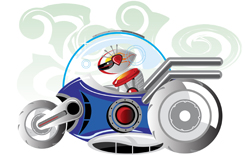The dream for the vehicle of the future
The issue of transport in society has many facets. First and foremost it is a necessity for demographic growth and sustainable urban development. However, there are many concerns around city transport including safety, pollution and health and town planning. A third issue concerns the future of city transport and incorporates both the dreams and ambitions of the stakeholders translated into a reality using scientific technology. To ensure the sustainable progress of development of urban transport, the pursuit of science has to be encouraged in society and because technology has an impact on society, science must be reconciled with the social needs of its citizens. To this end, the EU-funded project 'Véhicule Innovants d'Avenir' (VIA) produced a fictional documentary on transport of the future, the target audience being mainly young people. The production titled 'Move along, there is everything to see' presents a vision of the future for urban transport and involves European scientists actually working on the development of new sustainable forms of transport for our cities. The documentary features three forward thinkers who explore visions of urban transport for the future – a scientist inspired by science fiction, an urban planner who likes playing with toy cars and an artist inventing new utopias. The docufilm also represents the hopes and fears of scientists and citizens alike and questions the part a utopian dream plays in the development of such technologies. The film was broadcast on a terrestrial channel and is also available to view on the Internet in three versions, one of which is an international version. For French, see http://www.si-nos-villes-avaient-des-ailes.com and for English, see http://if-cities-could-fly.com/ online. VIA managed to present another face of scientific research to replace the traditional image of the scientist confined to the laboratory. The human aspect of science has been merged with a very real scientific and social problem, urban transport. This novel approach will no doubt help to fuel the dreams of our young scientists and promote the image of science as a technical subject that includes the element of adventure.



